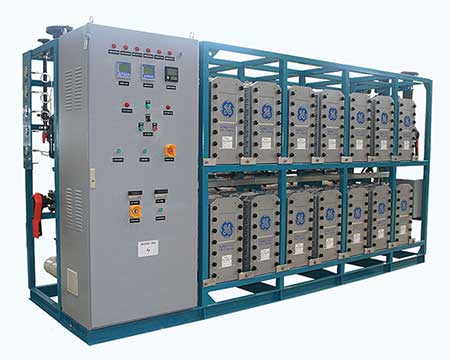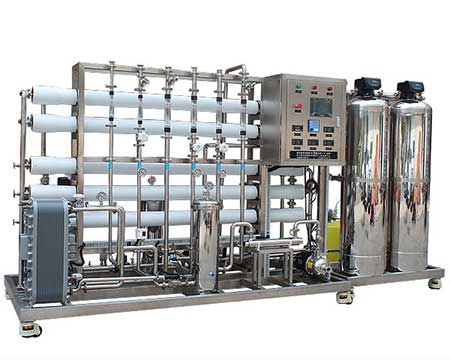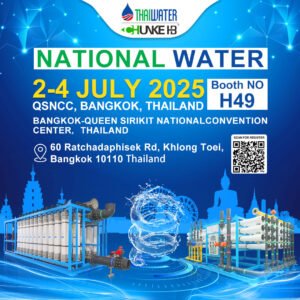Water Electrodeionization Systems
Water Electrodeionization systems are a continuous, chemical-free process of removing ionized and ionizable species from feedwater using DC power. So, An EDI water system is usually after the usage of a reverse osmosis system or even a double pass ro system.
Meanwhile, EDI water treatment help to guarantee that every part of the system will perform perfectly together. What results is an ultra purifiedsolution that meets all of your requirements.
Water electrodeionization systems remove ionized and ionizable species from water using electrically active media and electrical potential (DC power) to affect ion transport accordingly. By using this type of purification technology, caustic and acidic types of chemicals are not rneccessary. The water which has been treated by RO-EDI has typically exceeded end-user’s ulta pure water standards.
Capacity Range: Up to 50m3/Hour
Output Water Quality: Up to 18.2megaohm-cm
Feed Water Conductivity: <40µS/cm
Control System: Automatic
Capacity Range: Up to 50m3/Hour
Output Water Quality: Up to 18.2megaohm-cm
Feed Water TDS: <50000ppm
Control System: Autimatic
What is water electrodeionization systems?
Electrodeionization is an environment friendly solution. Hence, you can use it to remove ions from water with an electrically active media, without the use of chemicals. This process creates ultra-pure water through combining ion exchange water filters with electrical potential (DC power). So, electric potential regenerates resin with less cost, since it only requires electricity, while conventional ion exchange water treatment systems need large vessels, acid/caustic injection systems, and etc. EDI water treatment is also useful in cleaning RO permeate.
Water Electrodeionization systems is a continuous electro-chemical process of water deionization where ion specific membranes, mixed bed resin and a DC voltage across them, replace the standard hazardous acid-caustic chemical regeneration process.
Besides, in the newest technology of EDI water filtration, EDI modules must use with reverse osmosis system for many reasons. However, what are the advantages and disadvantages of softening and 1-pass and double pass RO as pretreatment?
What is the Advantage of EDI Water Purifier System?
Two pass RO followed by EDI gives the following advantages. And you can use it for power plants or pharmaceutical applications.
If feed water has lower conductivity, you can gain higher EDI output quality. Also lower CO2 of feed water, allow you to get higher silica removal. In addition, single pass RO system can be enhanced using membrane degasser for even better water electrodeionization systems performance. Meanwhile, membrane degasser can reduce the CO2 which enhances EDI performance, reduces scaling potential, and helps SiO2 removal by the EDI machine. Biggest advantage of EDI system is, you do not need use chemical purification and water electrodeionization systems achive high-pure water quality.
How does electrodeionization work?
Water Electrodeionization systems are designed to polish the permeate once the water has already went through a water treatment system, for example reverse osmosis. So, this system utilizes low energy consumption and disposes of the need for costly and unsafe chemicals used in conventional ion exchange water filters. Such factors make operation expenses much lower, and helps water treatment companies meet their environmental protection goals consequently.
As a result, Chunke most of project prefers to use IonPure LX modules, also for lower budget applications we have good quality other suppliers.



